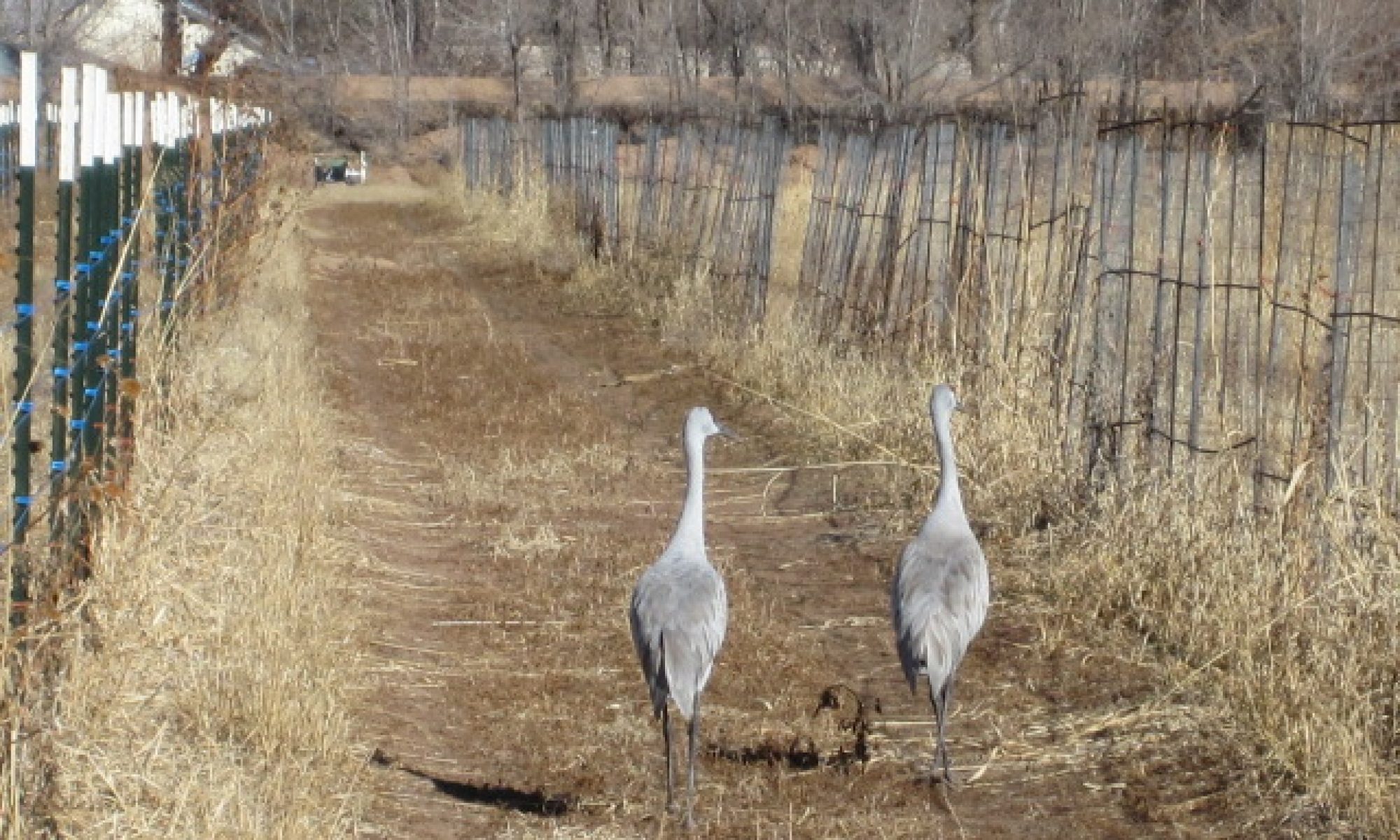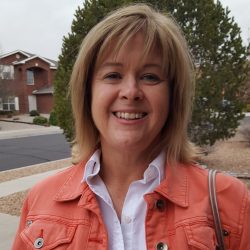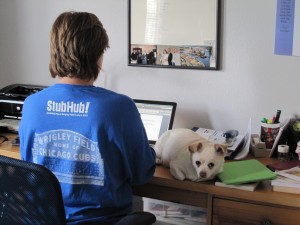It’s one-thirty Wednesday afternoon, and I’m standing in a sunny classroom blowing up an imaginary bubble. I make my fingers into a tube, hold them to my mouth, and blow.
I’m with nine teenagers and about fifteen pre-schoolers, participating in Project Serve, an afternoon of service learning at my school. The teenagers have been studying early childhood music education, and today they are putting that training to work for the first time. I don’t have a job here; the “big buddies” are in charge.
Once my bubble is all blown up, I make exaggerated spritzing motions with my finger and squeaky noises with my imaginary squeegee, cleaning my bubble so I can look around and see all my friends in their bubbles. When we’re all enclosed in our own protective spaces, we’re ready to sing and move around the room without crashing in to one another. A big buddy I’ll call Vee leads us in a song in Spanish about a statue garden (at least that’s what I think it’s about; I’m only one week in to Spanish class). When she says, “Asi!” we all stop and make crazy statue poses inside our bubbles.
I have an unusual job. My morning began at the Lucky 66 bowIing alley with seventy ninth-graders. The freshmen are bowling because the tenth and eleventh graders are taking the PSAT, and the seniors are sprawled across the building we call the schoolhouse, working on college applications. The original plan was to take the ninth graders to the corn maze, but we’re in a drought, so the corn never grew high enough to cut a maze into the stalks. I hope the short corn doesn’t mean the cranes won’t winter in this field, but that’s a thought for another essay.
The class of 2017 fills the first twenty-two lanes. Twenty-three and twenty-four next to us are empty (this bowling alley owner knows what he’s doing), and the rest of the lanes are occupied by a women’s senior citizen league. It’s nice, I think throughout the morning, this spectrum we make from one end of the building to the other: exuberant youth yields to blank space, which matures into rich old age. The students notice the women, too, but not the symbolism. “Those old ladies know how to bowl!” one of them tells me on the way back to the bus.
Bowling always takes me back to Pittsburgh. My friends and I spent lots of weekends and summer days bowling at the alley across the street from the Howard Johnson’s on the way down the hill toward Kaufman’s. There’s a Galleria there now, but if you live in Pittsburgh, you know that I’d never say I bowled at the lanes near the Galleria; they will always be the lanes up the street from where Kaufman’s used to be.
As far as I know, this firm adherence to yesterday’s landscape is strictly a Pittsburgh phenomenon. If I were to tell you how to get to my high school (which doesn’t exist anymore), I would tell you to turn left where the Heigh-Ho used to be. The Heigh-Ho burned down long before I ever went to high school, but if you want to know where to turn, you need to know that the Italian restaurant whose name no one knows is the Italian restaurant that’s where the Heigh-Ho used to be.
If we weren’t bowling across the street from the HoJo, chances are we were bowling at Caste Village, down the hill from where Aunt Ann and Uncle Don used to live, where you could still roll duckpins in the late seventies.
There’s one another anomaly about getting from one place to another in Pittsburgh that has shaped me in ways I haven’t fully explored yet. The first time my husband came home with me, we decided to make a quick trip to the mall. At the end of my parents’ driveway, Fred said, “Which way should I go?”
I told him the truth, which was, “It doesn’t matter.” He looked at me a little funny, but turned left. At the bottom of the hill, he asked again, “Which way should I go?” And I told him again, “It doesn’t matter.” It’s hard to understand these sort of directions if you grew up in a city on a grid, but most of the time if you want to get anywhere in Pittsburgh, you have to go over a hill or through a hill or around a hill, and it doesn’t much matter how you do it. Somehow you get where you are going.
After bowling two games, the freshman class, the other chaperones, and I head back to school. I stop in the schoolhouse to visit the seniors, and a student I’ve taught for the past two years asks me to read her college application essay.
Do you know how, after someone you love dies, you walk around for a little while without any skin? You feel everything; there’s a tender rawness in the air that tugs your heart outside your body and pins it, flapping, to your sweater.
My student doesn’t quite say those words in her essay, but she tells how she lost a woman who was a second mother to her when she was ten years old. She writes about how frightening it was to let people get close to her, how hard it was to learn to be vulnerable again, and how she finally grew into the strong and independent young woman I know.
She wants feedback on her writing. She wants to talk about how to make her essay more powerful and whether she needs all those commas in the second paragraph. She doesn’t want to talk about the old gash in her heart, or about the crack just now opening in response in mine, so I find myself saying the things I should say, like “Can you write about a specific time when you let someone in?” and “Do you remember a specific moment when you learned you could solve problems on your own?”
Her eyes grow soft while we talk, and I am having trouble keeping mine from doing the same, and this is what it means to teach high school. Students with their invisible stories ask teachers, who keep their own stories tucked in, about sentence structure, specific details, and semicolons, while what we’re all trying to say to each other is “I get scared, too,” and “yes, love will tear you apart.” We keep going up and over and around hills, and somehow we get where we’re going.
I say a few last words about her essay and it’s time to head to U8 to meet my service learning group. Over the course of one afternoon, I watch nine students transform into teachers. They start with their “Hello” song according to plan, and the first group of preschoolers is easy; they wave, they sing “Hi,” they pat their heads and stomp their feet. Everything the “big buddies” do works.
The second group is hard; some “little buddies” just aren’t going to sing or clap or pose like statues today. I watch the teenagers realize they need to improvise; they change their plan, they grab the interest they do see and run with it, reacting to the smiles and needs on the tiny faces before them.
The final group of little buddies is tiny and enthusiastic, and none of the big buddies wants to let them go home. We all wave and say goodbye and watch them walk across campus toward their bus. I imagine the bowling alley arcing back beyond the freshmen; I see these little bodies pushing round balls down smooth, bumpered alleys.
When the tiny ones are gone and the big buddies are putting the room back together, the energy is palpable. They talk about the kid in the yellow shirt who loved the bass, the goofy kid in the puffy jacket who made them laugh, the little girl who wouldn’t do anything but put her head on the floor. I recognize their euphoria, the adrenaline rush, the exhausted high a good teaching day leaves after the last student takes her story home.
All afternoon while I’ve been clapping and stomping and singing songs about shoes, I’ve been fighting back tears. Actually, not just tears. Do other people have these perfectly happy moments, when you become so overcome that you know that if you don’t keep everything in, what is going to come out of you is not a tear or two but a full-fledged, inconveniently timed sob? I think this might be what James Wright is talking about in “A Blessing” when he says
Suddenly I realize
That if I stepped out of my body I would break
Into blossom.
After the little buddies clean their bubbles, a big buddy asks, “What should we do with our bubbles now?” One little boy raises his hand so hard he levitates. “Pop the bubble,” he yells. Another little boy’s whole body smiles as he takes up the refrain, “Pop the bubble! Pop the bubble!”
The blossoming teacher before me promises them they can pop their bubbles at the end of class, so it’s really important to keep their bubbles safe and whole until then. It’s an inspired improvisation, and sure enough, at the end of class, she remembers her promise.
“Ok,” she tells them, “it’s time! Let’s all pop our bubbles.” Tiny fingers make poking motions and popping noises and then it’s done.
We all step out of our protective coatings and take our stories out into the world.
++++++++++++++++++++++++++++++++++++++++++++++++++++++++++++++++++



